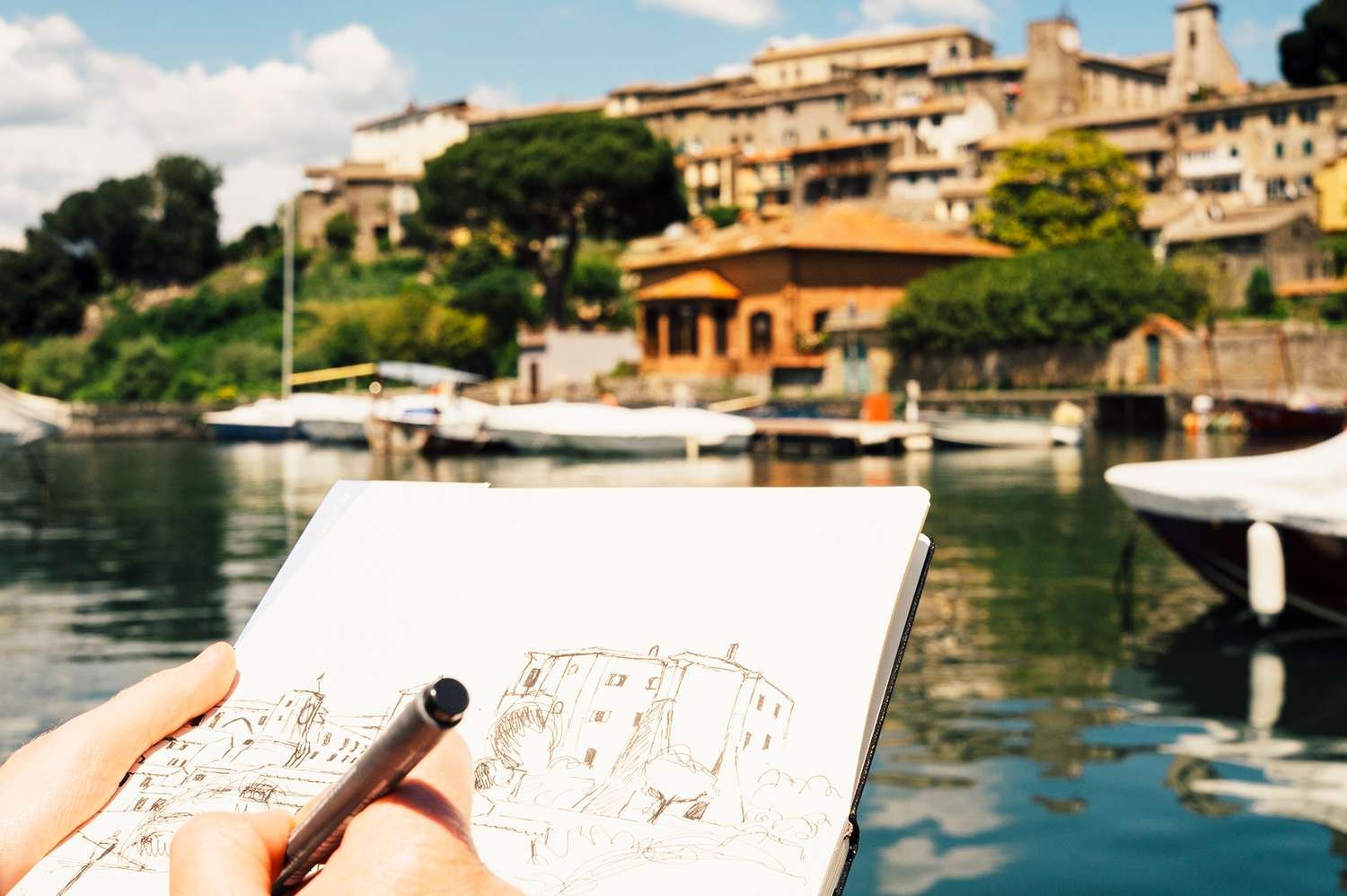As a digital nomad, I never hop on a plane without pencil and paper. Here’s why you shouldn’t either.
By the time I finished sketching the hills overlooking Cuenca—a charming colonial town in southern Ecuador—my fingers were going numb. Luckily, an elderly woman nearby was selling hot coffee and empanadas. Unluckily, she informed me that no buses were running back to town because it was Sunday. My heart sank. The hike here had taken me three hours, trudging uphill on a gravel road. Now, darkness was settling in, and the Andean wind was growing even colder.
Just as I’d resigned myself to camping in the bushes, a car pulled up. A young man stepped out, glanced at my sketchbook, and sat beside me, ordering a bottle of water from the woman. He was heading to Cuenca and offered me a ride, but when I reached for my wallet, he shook his head. “No money,” he said. “But maybe you could draw my portrait?”
Much to the annoyance of friends and family, I never bring a camera when I travel. I’m terrible at photography, don’t use social media, and prefer not to lug around expensive gear that might get lost. Instead, I draw. People, places, animals, buildings, landscapes—anything I come across as a digital nomad. And when I share these sketches with other travelers, the reaction is almost always the same: “I wish I could do that.”
Well, you can. And here’s why you should.
First off, travel sketchbooks are fantastic icebreakers—especially for introverts like me, who dread making the first move. Whether you’re in a national park or a public square, people will inevitably stop to watch, chat, or even join in. Nearly every major city, from Medellín to Amsterdam, has a Facebook group for urban sketching meetups. These aren’t just great for exploring but also for connecting with locals and fellow travelers.
Since drawing is a visual medium, it bridges language barriers. One of my fondest memories is sketching the jungle-covered peaks of Phong Nha, Vietnam, with a 10-year-old girl who worked at the restaurant where I’d stopped for lunch. The best part? Her beaming smile when I left her some of my art supplies.
Sketches aren’t just images—they’re memories. While photos capture a single instant, drawings unfold over minutes or hours, preserving multiple moments. The coffee stain on my sketch of the Hollywood sign? A souvenir from a minor California earthquake. The shaky lines in a self-portrait? Thanks to a venomous scorpion that stung me in my sleep in Guatemala. More than art collections, sketchbooks are wordless diaries.
In this era of FOMO and whirlwind travel, where people hop between countries with overstuffed itineraries, sketching forces you to slow down. To truly absorb the sights and smells around you. To stay—even briefly—in the present.
It also trains you to notice the small things. Sure, I love sketching waterfalls, monuments, and temples—the grand, awe-inspiring landmarks. But I also draw what most tourists overlook: random buildings, quiet alleyways, old men playing chess in the park, cats dozing in the sun. Artists, as the saying goes, find beauty everywhere.
That said, you don’t need to be a pro. I’ve never taken an art class; I draw purely for fun. The goal isn’t hyper-realism—otherwise, you’d just bring a camera. It’s about capturing the world as you see it. Originality matters more than technique, and the best way to be original is to simply start. Don’t hold yourself to rigid standards. You’ll naturally want to do your best—that’s human nature. The real challenge? Silencing your inner perfectionist, embracing imperfection, and being okay with it.
Nothing in life goes exactly as planned—not your trips, not your sketches. But that’s what makes them worthwhil

Leave a Reply